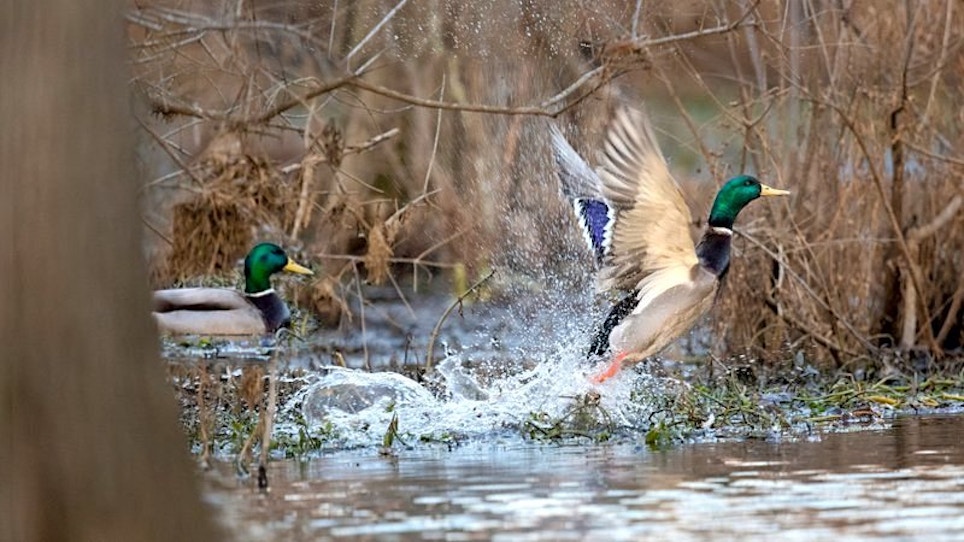
Mallard numbers are at the long-term average for November in Arkansas, according to aerial surveys. (Photo: AGFC)
Arkansas Game and Fish Commission staff conducting the November 2019 aerial waterfowl surveys estimated more than 681,000 ducks in the Arkansas Delta, but fewer than 250,000 of them were mallards, a count similar to the 2009-2019 long-term November average.
The observers conducted surveys Nov. 16-19 in the Mississippi Alluvial Valley (the Delta), Nov. 18 in the Arkansas River Valley, and Nov. 19 in southwest Arkansas. Along with the Delta count, about 36,000 ducks were seen the Arkansas River Valley, including fewer than 10,000 mallards. The southwest Arkansas total duck count was 17,193, including more than 8,000 mallards. Observers in the Delta estimated more than 1 million light (lesser snow and Ross’s) geese and slightly more than 400,000 greater white-fronted geese (specklebellies).
While the mallard count in the Delta was along the lines of the 2009-19 long-term average, total duck population estimates were about 100,000 fewer than the long-term average. Observers estimated more than 40 percent of mallards in the Delta in the Cache survey zone (almost entirely in the northern portion of the zone), with another 16 percent in the Little River Ditches zone; thus, more than 50 percent of all Delta mallards were in the northern reaches of the Delta during this survey.
Where Are the Mallards?
Primary mallard hot spots were limited to portions of Craighead, Greene and Poinsett Counties, along with Big Lake National Wildlife Refuge and Wildlife Management Area. Duck concentrations noted by observers included these hot spots along with the Dave Donaldson Black River WMA habitat complex, including Lake Ashbaugh and surrounding agricultural lands.
The trend of slightly lower total ducks on average and about normal in mallards was also found in the River Valley observations, with the highest mallard and total duck estimates in the Frog Bayou survey zone. About half the ducks observed in southwest Arkansas were mallards, and observers noted most ducks along the Red River habitat corridor.
Observers noted 50 percent of mallards in the Delta in agricultural fields (mostly rice), followed by scrub-shrub and moist-soil habitats. In the Arkansas River Valley, biologists saw nearly half of mallards in oxbow lakes and about 20 percent in moist-soil habitats. Multiple cold fronts, including one that set records for low temperatures, preceded this survey period, so expectations were set for high duck counts.
However, survey estimates indicated only average mallard numbers and below-average total duck numbers.
"Anecdotally, unmanaged habitat appeared to be high (in duck numbers) during the 7-10 days before surveys began and following extreme cold temperatures and obvious migration events," Luke Naylor, the AGFC waterfowl program coordinator, said. "Much of this habitat disappeared from the landscape by the time of this survey, particularly in the central Delta, and this habitat decline was exacerbated by warming temperatures and south winds that likely urged ducks north.
"In contrast, flooding on agricultural lands in the north Delta remained good as farmers captured water in their fields and provided important habitat. Duck numbers reflect this habitat availability: estimates were high in the north Delta while noticeably low south of a line that roughly corresponds with U.S. Highway 64, including regions that are historic strongholds for ducks and duck habitat."
AGFC survey observers were J.J. Abernathy, Jason Carbaugh, Jason Jackson, Cameron Tatom and Alex Zachary. Staff will conduct the next aerial waterfowl survey the week of Dec. 16.





